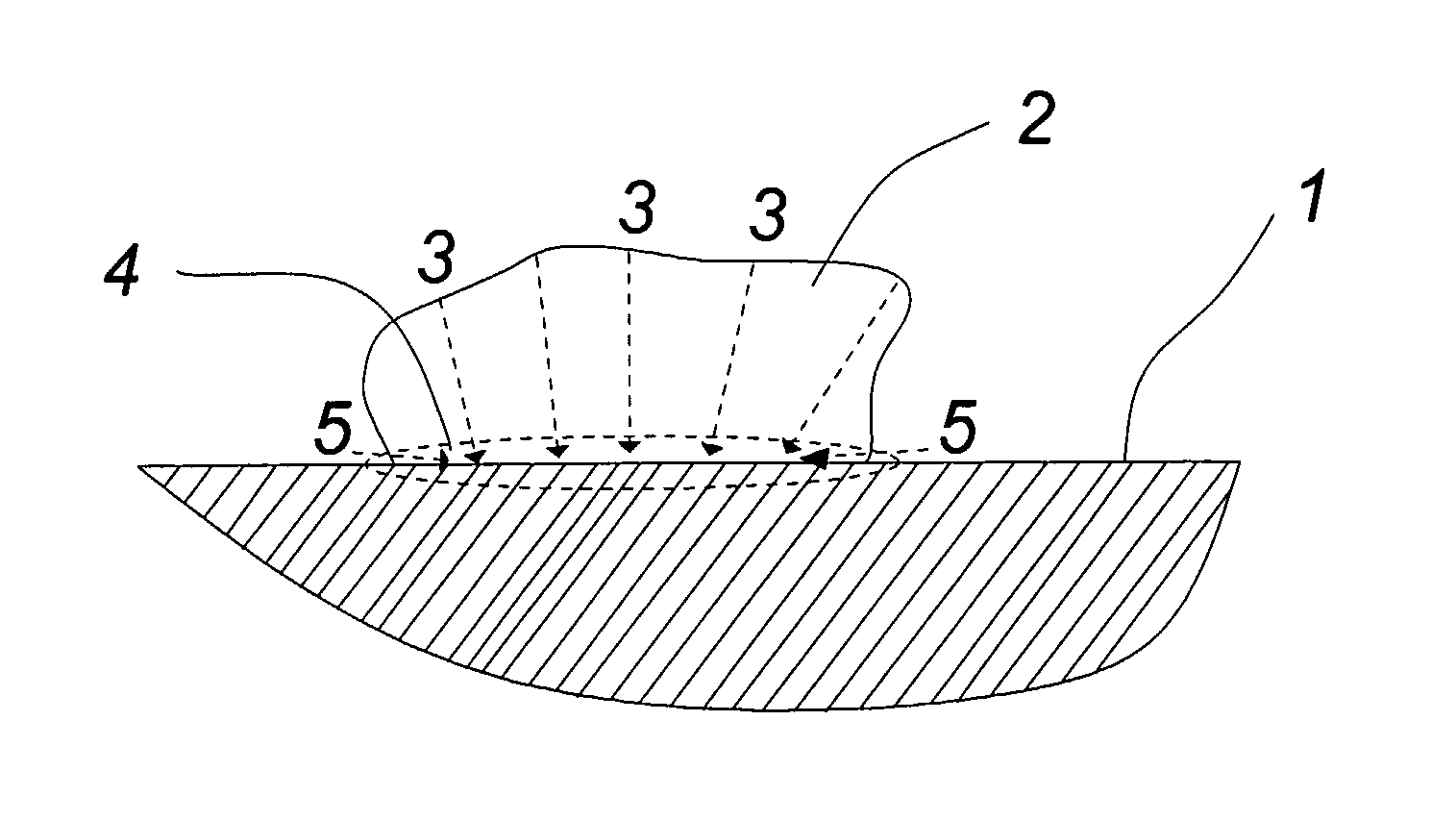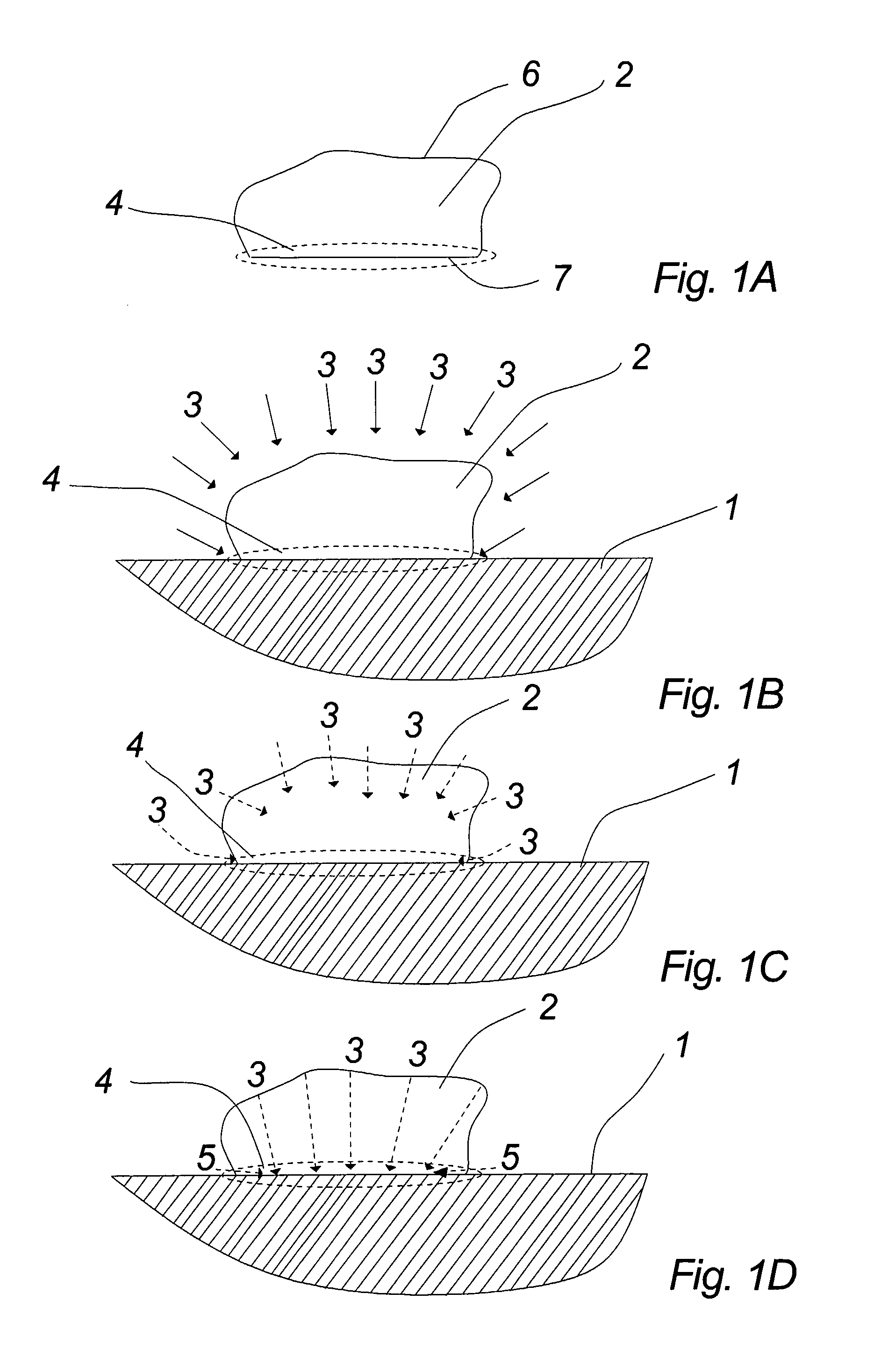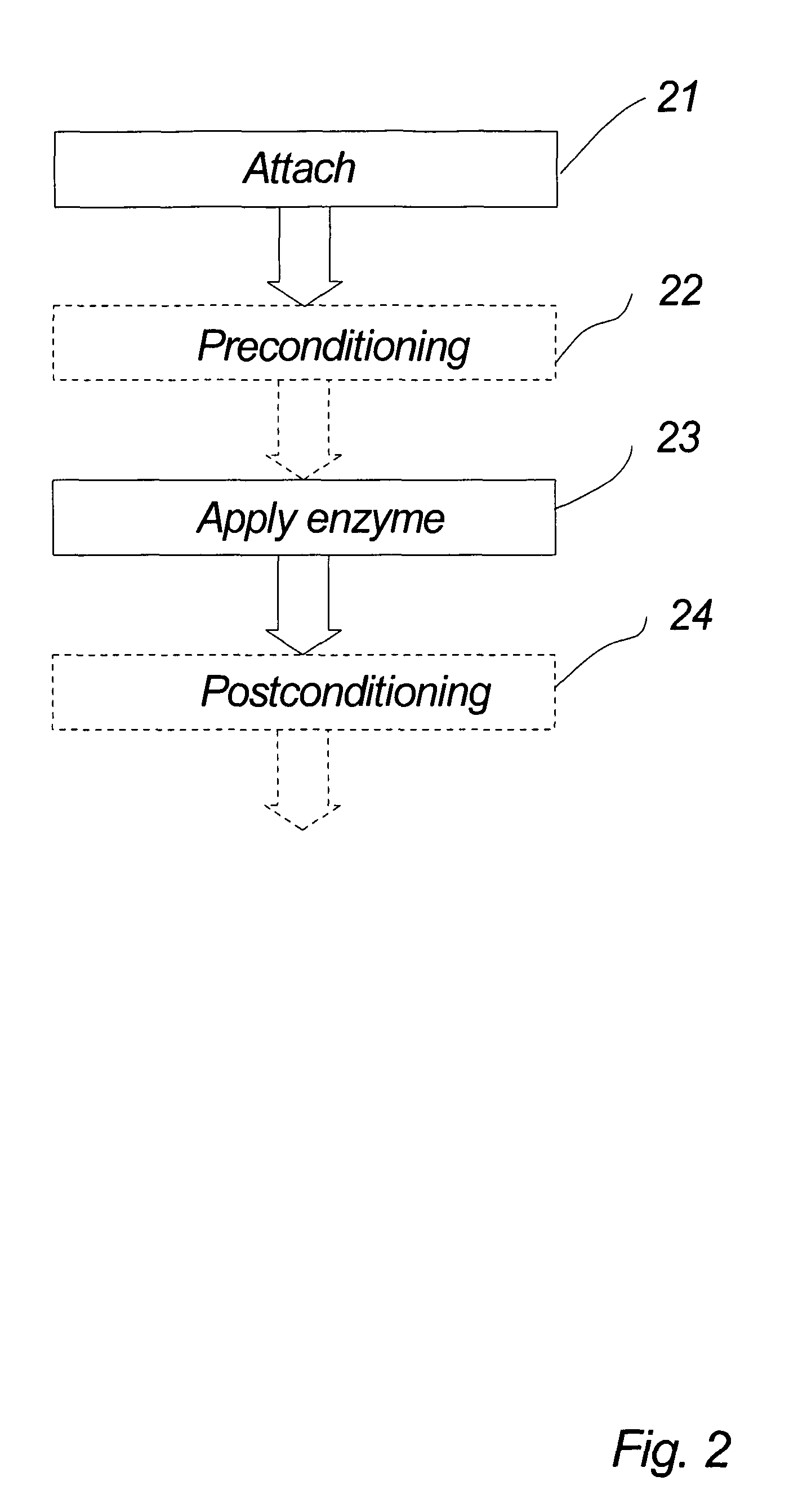Method of cleaning a surface attached with at least one chewing gum lump
a technology of chewing gum and surface, which is applied in the direction of cleaning process and apparatus, cleaning using liquids, detergent compositions, etc., can solve the problems of difficult cleaning, and achieve the effect of lenient surface and accelerated degradation
- Summary
- Abstract
- Description
- Claims
- Application Information
AI Technical Summary
Benefits of technology
Problems solved by technology
Method used
Image
Examples
example 1
Preparation of Polyester Elastomer Obtained by Ring-Opening Polymerization
[0219]An elastomer sample is synthesized within a dry N2 glove box, as follows. Into a 500 mL resin kettle equipped with overhead mechanical stirrer, 3.143 g pentaerythritol and 0.5752 g Sn(Oct)2 (2.0 ml of a 1.442 gSn(Oct)2 / 5 mL in methylene chloride) are charged under dry N2 gas purge. The methylene chloride is allowed to evaporate under the N2 purge for 15 min. Then ε-caprolactone (1144 g, 10 mol), Trimethylene carbonate (31 g, 0.30 mol) and δ-valerolactone (509 g, 5.1 mol) are added. The resin kettle is submerged in a 130° C. constant temperature oil bath and stirred for 13.9 h. Subsequently the kettle is removed from the oil bath and allowed to cool at room temperature. The solid, elastic product is removed in small pieces using a knife, and placed into a plastic container.
[0220]Characterization of the product indicates Mn=56,000 g / mol and Mw=98,700 g / mol (gel permeation chromatography with online MALLS d...
example 2
Preparation of Polyester Elastomer Obtained by Ring-Opening Polymerization
[0221]An elastomer sample is synthesized within a dry N2 glove box, as follows. Into a 500 mL resin kettle equipped with overhead mechanical stirrer, 3.152 g pentaerythritol and 0.5768 g Sn(Oct)2 (2.0 ml of a 1.442 gSn(Oct)2 / 5 mL in methylene chloride) are charged under dry N2 gas purge. The methylene chloride is allowed to evaporate under the N2 purge for 15 min. Then ε-caprolactone (1148 g, 10 mol), Trimethylene carbonate (31 g, 0.30 mol) and δ-valerolactone (511 g, 5.1 mol) are added. The resin kettle is submerged in a 130° C. constant temperature oil bath and stirred for 13.4 h. Subsequently the kettle is removed from the oil bath and allowed to cool at room temperature. The solid, elastic product is removed in small pieces using a knife, and placed into a plastic container.
[0222]Characterization of the product indicates Mn=88,800 g / mol and Mw=297,000 g / mol (gel permeation chromatography with online MALLS ...
example 3
Preparation of Polyester Resin Obtained by Ring-Opening Polymerization
[0223]A resin sample is produced using a cylindrical glass, jacketed 10 L pilot reactor equipped with glass stir shaft and Teflon stir blades and bottom outlet. Heating of the reactor contents is accomplished by circulation of silicone oil, thermo stated to 130° C., through the outer jacket. ε-caprolactone (358.87 g, 3.145 mol) and 1,2-propylene glycol (79.87 g, 1.050 mol) are charged to the reactor together with stannous octoate (1.79 g, 4.42×10−3 mol) as the catalyst and reacting in about 30 min. at 130° C. Then molten D,L-lactide (4.877 kg, 33.84 mol) are added and reaction continued for about 2 hours. At the end of this period, the bottom outlet is opened, and molten polymer is allowed to drain into a Teflon-lined paint can.
[0224]Characterization of the product indicates Mn=6,000 g / mol and Mw=7,000 g / mol (gel permeation chromatography with online MALLS detector) and Tg=25-30° C. (DSC, heating rate 10° C. / min)....
PUM
| Property | Measurement | Unit |
|---|---|---|
| molecular weight | aaaaa | aaaaa |
| temperature | aaaaa | aaaaa |
| temperature | aaaaa | aaaaa |
Abstract
Description
Claims
Application Information
 Login to View More
Login to View More - R&D
- Intellectual Property
- Life Sciences
- Materials
- Tech Scout
- Unparalleled Data Quality
- Higher Quality Content
- 60% Fewer Hallucinations
Browse by: Latest US Patents, China's latest patents, Technical Efficacy Thesaurus, Application Domain, Technology Topic, Popular Technical Reports.
© 2025 PatSnap. All rights reserved.Legal|Privacy policy|Modern Slavery Act Transparency Statement|Sitemap|About US| Contact US: help@patsnap.com



